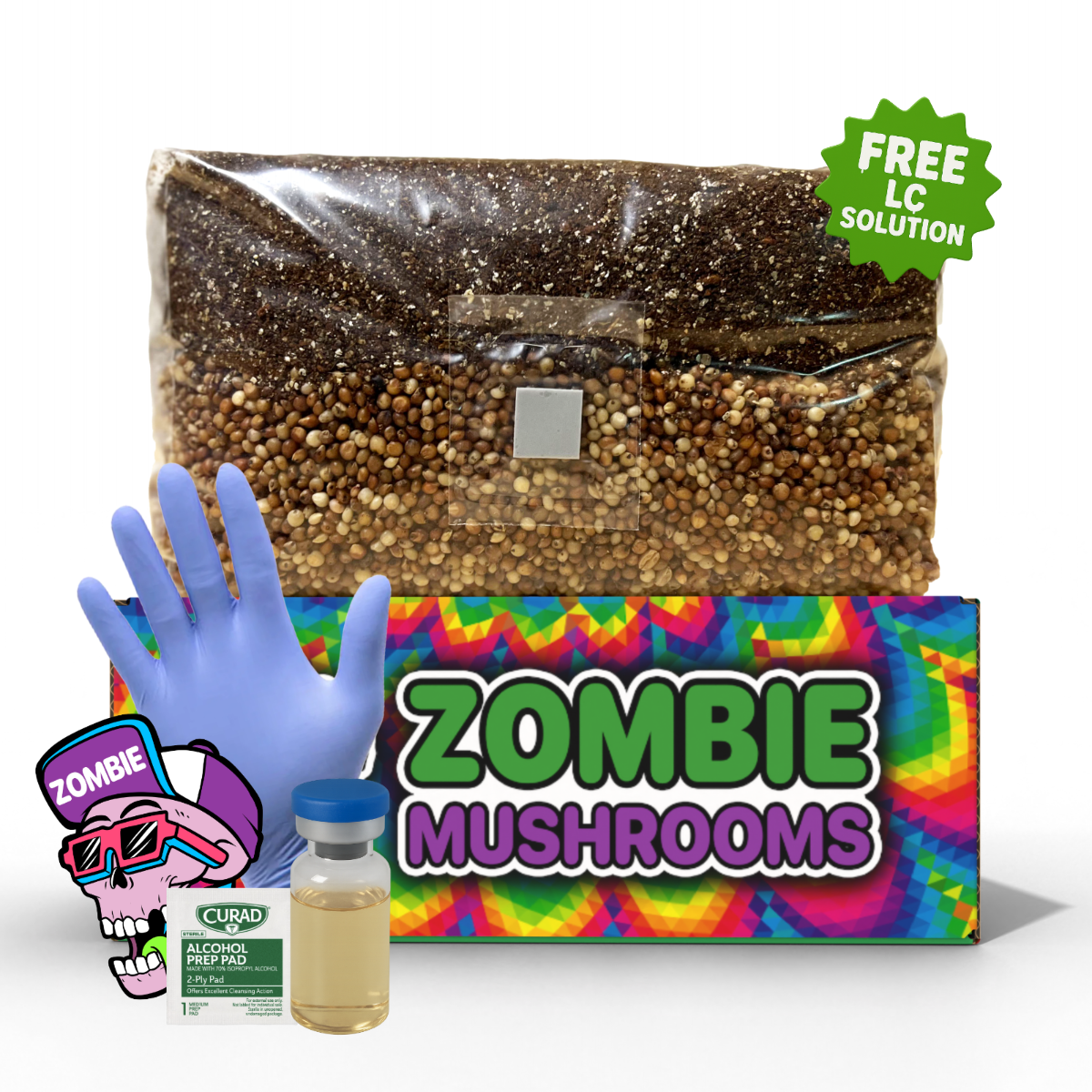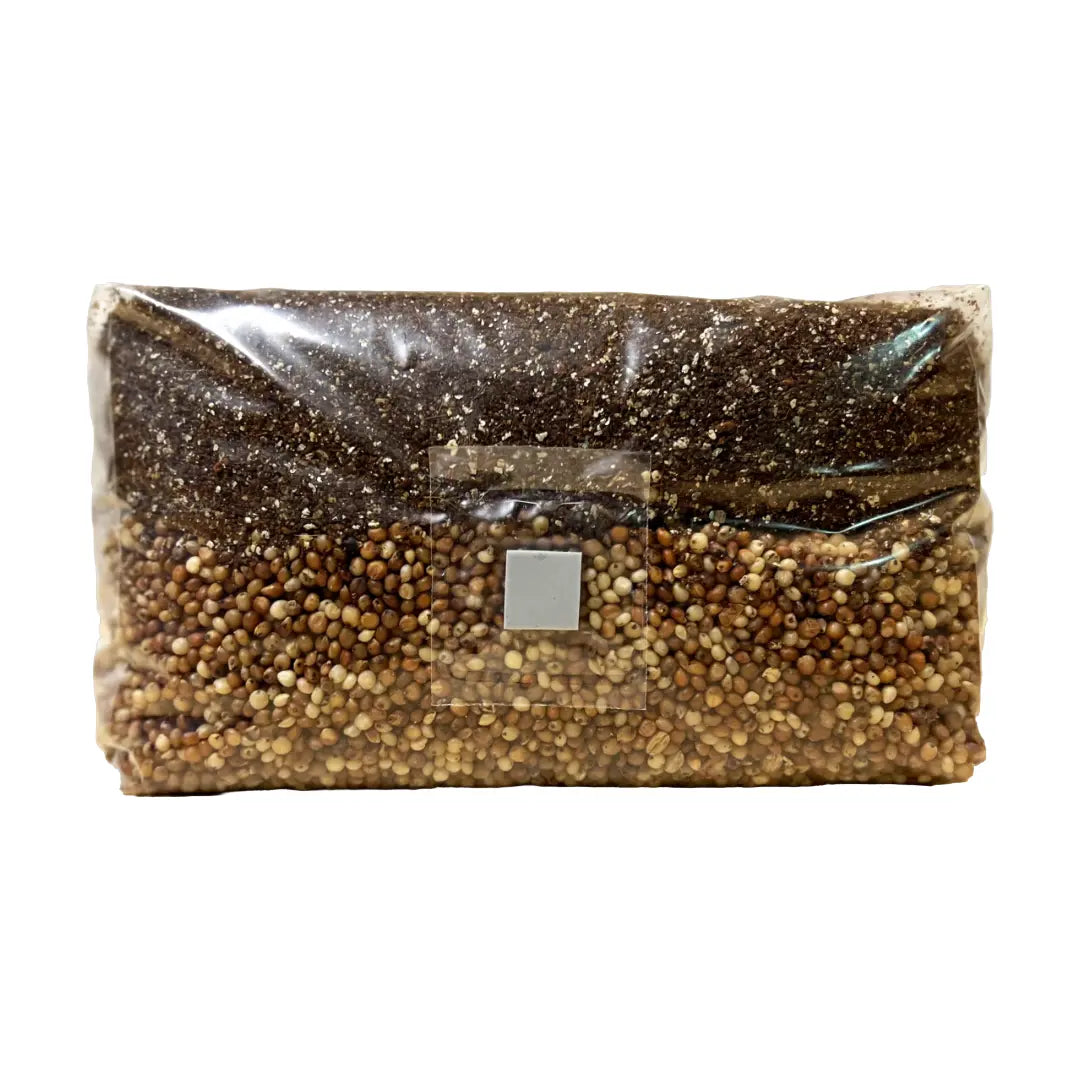⬇️ Prefer to listen instead? ⬇️

- Olive oysterling mushrooms thrive in cold weather and can produce fruit when most other cultivated mushrooms won’t.
- They contain bioactive compounds with antioxidant and antimicrobial properties, which may offer potential health benefits.
- These mushrooms convert dead hardwood into edible food, promoting sustainable food systems.
- Proper log soaking and humidity management can improve colonization success by up to 30%.
- Beneficial bacteria, like Bacillus subtilis, can aid mushroom growth and reduce contamination risk.

Grow Olive Oysterling Mushrooms at Home: The Complete Mushroom Growing Guide
You can grow olive oysterling mushrooms at home even if they’re not among the most common varieties. Renowned for their nutty, firm texture and cold-weather tolerance, olive oysterlings thrive on hardwood logs and offer sustainable yield when cultivated properly. With the right setup—including quality spawn, suitable substrate, and reliable tools like our mushroom grow bags for indoor or log-based cultivation—you’ll enjoy rich flavor and a rewarding harvest from these resilient fungi.

Why Grow Olive Oysterling Mushrooms?
Many people start by growing common oyster mushrooms or shiitake. But olive oysterlings offer things others do not. They are good to grow if you want to try different kinds.
Unique Flavor and Texture
People like the taste of olive oysterlings. They taste nutty and sweet. They are also nice to chew. Some mushrooms get soft when cooked. But these stay firm and full of flavor. They are great for cooking. Their caps are thick and feel like meat. So, they work well in soups, baked dishes, and when stir-fried hot.
Impressive Cold-Weather Tolerance
This mushroom is different because it grows well in cold temperatures. Other mushrooms stop growing then. Oysterlings grow best in the fall and early winter. This is a time when other plants stop growing. This means you can still pick fresh mushrooms after the normal time. You can even grow them in the cold months.
Natural Bioluminescence
A cool thing about olive oysterlings is that they glow a little in the dark. They don't glow as much as some other mushrooms that glow. But their gills can give off a soft light in the dark. It looks nice for the person growing them.
Medicinal Potential
Lee & Lee did a study in 2023. They found that these mushrooms have compounds that might be good for health. Like beta-glucans and antioxidants. These compounds might help your body's defense system. They might also help with swelling, damage from free radicals, and problems caused by germs (Lee & Lee, 2023).
Ecologically Sustainable Crop
Growing mushrooms at home, like olive oysterlings, is a way to grow food that is good for the earth. These mushrooms eat dead hardwood trees. They turn wood that isn't worth much into food that is good for you. They don't need fertilizer and not much water. When they are done growing, the wood they grew on breaks down naturally.

Scientific Classification & What They Look Like
| Taxonomic Rank | Classification |
|---|---|
| Kingdom | Fungi |
| Phylum | Basidiomycota |
| Class | Agaricomycetes |
| Order | Agaricales |
| Family | Mycenaceae |
| Genus | Panellus |
| Species | Panellus serotinus |
People sometimes group this mushroom with other mushrooms that look like oysters. But it has clear features that make it different. It looks different and grows in different places.
Identifying Features
- Cap: Olive-green to brownish-olive with occasional hints of violet. Caps range between 2 to 10 centimeters wide and appear fan-shaped or semicircular.
- Surface: Youthful specimens are velvety to the touch, while mature ones may develop a gelatinous texture in humid conditions.
- Gills: Cream-colored or pale yellow, decurrent (gills run down the stem), spaced moderately.
- Stem: Short and often lateral; can be off-center and attaches directly to logs.
- Spore print: White to cream—a reliable ID trait when uncertain.
Avoid toxic or inedible look-alikes like:
- Omphalotus illudens (Jack-o'-lantern mushroom) — bioluminescent but poisonous
- Pleurocybella porrigens — delicate but linked to kidney toxicity
- Panellus stipticus — bitter-tasting and inedible
What You’ll Need to Grow Olive Oysterling Mushrooms at Home
1. Choose Quality Spawn
Start with white, vigorous plug spawn, fast-colonizing sawdust spawn, or lab-clean liquid culture. Healthy spawn sets the stage for good yields.
2. Select Ideal Substrates
Olive oysterlings are a white-rot species—hardwood logs are best. Oak leads in yield and longevity; Maple, Beech, Alder, Birch, and Elm also work well. Avoid softwoods like pine and cedar, which contain resins that inhibit growth.
3. Prepare Hardwood Logs
Use logs that meet the following conditions:
- Length: 3 to 4 feet
- Diameter: 4 to 8 inches—that balances weight and surface area
- Timing: Cut down trees when they are not growing (late fall to winter). They have the most sugar then.
- Rest Period: Wait 2–4 weeks after cutting the trees. This lets the natural chemicals that fight mushrooms break down in the wood.
- Optional Step: Before putting the spawn in, soak the logs in cold water for a day or two. Soaking the logs first can make the mushroom roots grow much faster.

Step-by-Step Mushroom Growing Guide for Olive Oysterlings
Step 1. Inoculating the Logs
You can put the spawn in the logs two main ways:
🔩 Drill-and-Fill (Traditional Method)
- Drill holes about 6 inches apart. Make rows that are not right next to each other along the log.
- Put the plug or sawdust spawn into each hole. You can use a tool for this or a stick.
- Cover the holes with wax that is safe for food. This keeps water in and keeps bugs out.
🌲 Totem Stack (Vertical Bag Method)
- Cut logs into 6–12 inch slices.
- Stack the log pieces one on top of the other. Put sawdust spawn between each piece.
- Put the stack into plastic bags or bags made for growing that hold water.
- Store in cool, shaded areas.
- Growing this way gives you mushrooms sooner. But you won't get mushrooms for as many years as from whole logs.
✅ Pro Tip: Write the date you put the spawn in on each log or stack. Also write what kind of spawn you used. This helps you keep track.
Step 2. Incubation and Mycelial Colonization
Colonization happens when the mushroom roots spread all through the wood. This happens before the mushrooms start to grow.
- Timeline: 6–12 months
- Light: Indirect sunlight or total shade
- Humidity: 60–70%
- Temperature: 50–70°F
- Formation: Stack the logs like building blocks (like a log cabin). Or lean them against something like a tent. This lets air move around them.
Check the logs sometimes to see if the mushroom roots are growing well. Look for white lines on the ends or just under the bark.
Bonus: You can add good bacteria like Bacillus subtilis. This helps the mushrooms grow better and can stop bad molds or germs (Zhao et al., 2020).
Fruiting Conditions & How to Trigger Growth
After the mushroom roots have spread all through the logs, you need to make the mushrooms grow. Do this by making conditions like it is fall.
How to Shock Fruiting Logs
-
Water Soaking: Submerge logs in clean, non-chlorinated cold water for 12-24 hours to rehydrate the wood and activate fruiting.
-
Temperature Shift: Olive oysterlings respond best when temperatures drop to around 40-60°F (4-15°C), mimicking fall conditions.
-
Humidity & Light: Keep relative humidity between 80-90%. Use indirect light or filtered natural light for at least 6 hours a day. Too much direct sun can dry the log surface.
-
Airflow & Monitoring: Ensure good airflow around logs; slight bark cracking and visible pinheads are signs you’re on track for harvest.
Signs you’re on track:
- Mushroom roots get thicker at log ends
- Bark starts to crack or loosen slightly
- Small bumps start to show up in a few days. These are the baby mushrooms.

Harvesting, Cooking, and Storing Olive Oysterlings
When to Harvest
- They have bright color and the caps feel firm
- The edges of the caps are flat. They are not curling up or getting dry.
- It's best to pick them 5–10 days after they start growing.
Pick them by twisting gently or using a clean knife to cut near the log. Try not to hurt the log.
How to Store This Mushroom
- Fresh Use: Store refrigerated in a paper bag for up to 7–10 days.
- Dehydrating: Use a food dehydrator at 100–110°F. After they are dry, put them in containers that seal tight and keep water out.
- Freezing: Cook them first (like frying them in a pan). Then put them in containers that seal and freeze them.
- Other Ways to Store: You can also pickle them or make powder from them after drying. Both ways keep them for a long time. And you can use them in many kinds of food.

Cooking Ideas: Best Ways to Enjoy These Mushrooms
You can just fry them simply. But olive oysterlings work well in many other foods:
- Add to risottos for richness
- Cook them in the oven with root vegetables. This gives a taste of the earth.
- Put them in dressings made with soy sauce. Then cook them on sticks over heat.
- Mix them into soups or sauces to make the deep, savory taste stronger.
Try the classic:
🍳 Garlic-Thyme Sautéed Olive Oysterling Mushrooms
Easy to make. They smell good. Great on toast or pasta.

Maintaining Your Mushroom Logs for Long-Term Yields
Keeping Logs Productive
- Make the logs wet again every 2–3 months by soaking them.
- After the first year, drill new holes near the edges. Add more spawn there. Make sure everything is very clean when you do this.
- Keep them safe from bad weather. Cover them with cloth that makes shade when it's hot. Use mulch or straw when it's cold in winter.
Logs usually give you mushrooms for 2 or 3 years. When the bark starts to fall off and you get fewer mushrooms, put the logs in your compost pile or bury them. This helps the small life in the soil.

Taking It Further: DIY Spawn Production
If you like doing things like experiments at home:
- Take a small piece from a healthy mushroom.
- Put the piece on clean jelly in small round dishes.
- When the mushroom roots grow on the jelly, move them to jars with cooked grain (like rye or millet).
- Use the grain with mushroom roots to start logs or even blocks of sawdust.
This lets you choose the best types of mushrooms for your area. It also means you don't have to buy spawn from others for your hobby.

Troubleshooting Common Issues
| Problem | Solution |
|---|---|
| Roots Growing Slow | Use fresh logs; keep conditions steady; check how old your spawn is. |
| No Mushrooms Growing | Soak logs again; check if it got cold enough; check the light. |
| Moldy Logs | Cut off the parts with mold; clean it a little or move the log away from others. |
| Bugs (slugs, beetles) | Make sure wax plugs are sealed; keep logs clean; move logs to a new spot sometimes. |

FAQs About Olive Oysterling Mushrooms
-
How long does it take for olive oysterling mushrooms to fruit at home?
After inoculation, expect 6–12 months for full log colonization. Fruiting begins after that when conditions are optimal. -
Can olive oysterlings grow in bags or indoor setups?
Yes—while hardwood logs are preferred, using sawdust logs or stacked log slices in grow bags gives more control indoors or in colder climates. -
What are the best woods for olive oysterling substrates?
Oak offers strong yield and durability; Maple, Beech, Elm, and Alder also perform well. Avoid softwoods to prevent inhibition by natural chemicals. -
How should I store harvested olive oysterling mushrooms?
Keep fresh mushrooms in a paper bag in the fridge for up to 7-10 days. For longer storage, dehydrate at ~100-110°F and store in airtight containers. Cooked or powder forms work too. -
How many years can a log keep producing olive oysterlings?
Hardwood logs typically produce for 2-3 years, depending on wood quality and maintenance. Renew spawn in edge areas for extended productivity.
Final Thoughts
Growing mushrooms at home is a good way to make food that is healthy. It feels very rewarding and is good for the earth. Olive oysterling mushrooms grow very well when it's cold. They taste rich and good. They are an interesting kind to grow if you like mushrooms.
This guide helps you know what to do. You will feel ready to grow mushrooms at home. You might use logs in your garden or small stacks on your porch. If you are patient and careful, you can get mushrooms for many years.
Citations
- Lee, H. M., & Lee, J. S. (2023). Antioxidant and immune-modulating compounds in Panellus serotinus. Foods, 14(1), 128. https://doi.org/10.3390/foods14010128
- Zhao, H., Fu, Y., Luo, Y., & Li, B. (2020). Environmental microbiology factors improving mycelium colonization: The case of Bacillus subtilis in fungal substrate management. Journal of Applied Microbiology. https://doi.org/10.1111/jam.15480



